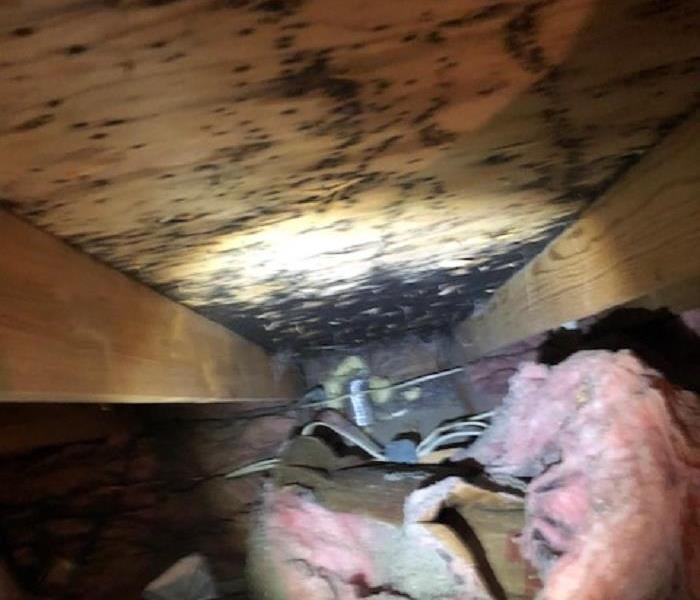Mold Remediation Photo Gallery
Mold on the Floor of Bedroom
Dampness or inadequate ventilation typically results in the growth of mold or mildew on wood surfaces. Mold usually appears as black or greenish-brown patches on surfaces in humid environments. Besides causing an unsightly appearance, spores from mold fungi can cause allergies and other health concerns.
In the picture you can see the mold that formed on the wood subfloor in the spare bedroom. This was caused by a pin hole puncture in the plumbing that was hidden inside the wall and went un-noticed for days if not weeks.
Before we could start the dryout phase we had to kill, disinfect and clean the mold from the wood subfloor. The trim, some drywall, carpet, and pad had to discarded by IICRC standards so the mold (mold spores) would not spread thru out the home. In the end, we make disasters "Like it never even happened."
Interior Mold Damages in Bedroom
Dampness or inadequate ventilation typically results in the growth of mold or mildew on wood surfaces. Mold usually appears as black or greenish-brown patches on surfaces in humid environments. Besides causing an unsightly appearance, spores from mold fungi can cause allergies and other health concerns.
In the picture you can see the mold that formed on the wood behind the drywall in the trey ceiling in the bedroom. This was caused by a small leak in a weld of the copper pipes located in the ceiling of the bedroom.
Before we could start the dryout phase we had to kill, disinfect and clean the mold from the wood. In the end, we make disasters "Like it never even happened."
Mold on Window Seal
Mold at the bottom of the inside would suggest that interior condensation is pooling there. Window condensation is caused by two factors: Interior glass temperatures below the dew point. Humid enough interior air that there's enough moisture to condense on your cold windows.
This is very common with older windows that are made out of wood.
As a result of the moisture/rot damages to the wood on and around the window it was determined more cost effective to have the windows removed and replaced with new vinyl windows than cleaned and repaired.

Mold in the Attic
Mold growth occurs when the roof leak results in enough moisture buildup to cause mold growth throughout the entire attic area. Limited growth occurs when an attic has good enough ventilation to prevent condensation, so moisture accumulates only in the immediate area of the leak.
In the picture you can see the mold growth was extensive. We first had to make repairs to the roof so the mold would not re-surface. Second, we removed the affected insulation. In the final phase we killed and cleaned the mold from sheathing and rafters.




 24/7 Emergency Service
24/7 Emergency Service